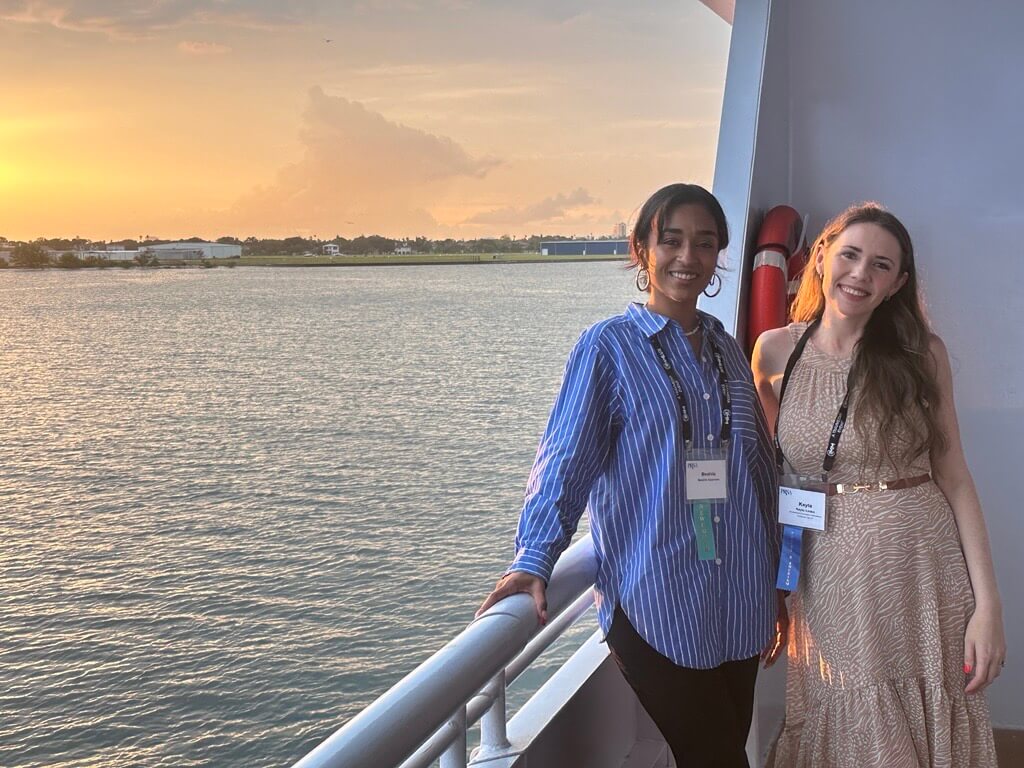Six Tourism PR Wake-Up Calls From 2025 PRSA Conference
June 25, 2025
At the 2025 PRSA Travel and Tourism Conference in June, new ideas and conversations drove destination marketing into new territory. As today’s traveler continues to evolve, so must tomorrow’s approach to tourism PR. Understanding what travel writers and content creators are seeking is pivotal to ensuring PR strategies connect authentically to audiences.
DCI’s team attended and curated a list of the six wake-up calls that destination marketers need to hear. It’s only by listening to each other, to the travel media, and sharing these takeaways that we can all develop marketing solutions that move the needle.
1. Honesty + Hyperlocal = Credibility
There was a clear push for more grounded, authentic storytelling, not just surface-level promotion. Travel writers and media professionals are looking for narratives rooted in community and culture, with real people at the center. Whether it’s a conservationist, artist, or small business owner, these local voices are what make a destination feel layered and honest.
Pro tip: Several panelists during the PRSA Travel and Tourism event emphasized that it’s okay to talk about challenges, if we are showing how the community is responding and problem solving. Authenticity isn’t about being perfect, and destination storytelling needs to lean into that more.
2. Personalization Isn’t Optional—It’s Expected
Group FAM trips that try to serve everyone often serve no one. During the PRSA Travel and Tourism Conference, it became clear that the most successful press trips are now smaller, more curated, and aligned with the journalist’s specific beat or interests. Panelists generally agreed that media want flexibility, downtime and storytelling opportunities that match their audience.
Pro tip: Themed itineraries, one-on-one visits, and a mix of well-known and under-the-radar experiences are what get media professionals excited. Destinations need to offer these personalized engagements more systematically moving forward.
3. Don’t Just Ride the Trend—Add Your Own Layer
Leveraging big cultural moments such as concerts, sporting events, and viral trends work best when paired with local context. Instead of just promoting the event, destinations should ask: what’s happening around it that makes this place stand out? What’s the local fan experience, or the pre/post moment?
Pro tip: Riding a trend—Taylor Swift is in town! —might get someone’s attention, but it’s the destination’s unique spin that makes the story stick. Travel media professionals don’t just want to write about how you’re part of the trend. They want to know how you are shaping it and making it your own.
4. Strong Media Relationships Above All
Mass outreach is a thing of the past. During the PRSA Travel and Tourism event, editors and freelancers alike emphasized the importance of personal connection. Knowing what someone covers and showing that in your outreach still goes a long way. It’s not about volume. It’s about relevance.
Pro tip: The best outcomes are coming from communicators who take the time to build relationships over time, follow journalists’ work and offer value even when there’s no ask on the table. Destination marketers need to commit resources and energy to creating deeper relationships with increasingly diverse media actors instead of trying to cast a wide net across all publications.
5. Broadcast Requires a Visual, Segment-Ready Approach
Television coverage is still incredibly valuable, but it requires a distinct approach. Stories need to be visual, easy to grasp and tied to something timely (like a national day, seasonal shift, or milestone). Panelists also revealed that anniversaries are a big theme for broadcast.
Pro tip: Make it easy for producers by providing ready-to-go pitches with assets like b-roll and social tags. Destinations that can offer access, exclusivity or surprise elements tend to stand out. Consider offering destination-themed gift boxes, which are a way to make a broadcast pitch more visual—think “unboxing a destination” for a morning talk show.
6. Lead with Meaning, Support with Data
Data-driven messaging only works when it’s tied to something relatable. Instead of relying entirely on numbers to do all of the work, it’s important to make clear what those numbers mean for residents, local businesses, or travelers. During the PRSA Travel + Tourism event, panlists made it clear that there still value in big stats, but they need context to make them feel relevant. It’s about making the story feel grounded, not just impressive on paper.
Pro tip: While destination marketers can give the media stats, they shouldn’t be the entire narrative. Include people and local characters into data-heavy pitches to contextualize them and make media professionals see why the numbers matter to local communities.
Connect with Beatriz Guerrero at beatriz.guerrero@aboutdci.com to learn about working with DCI to elevate your marketing approach to connect better with the travel media. Tap into more than 65 years of destination marketing experience to reach your goals.
